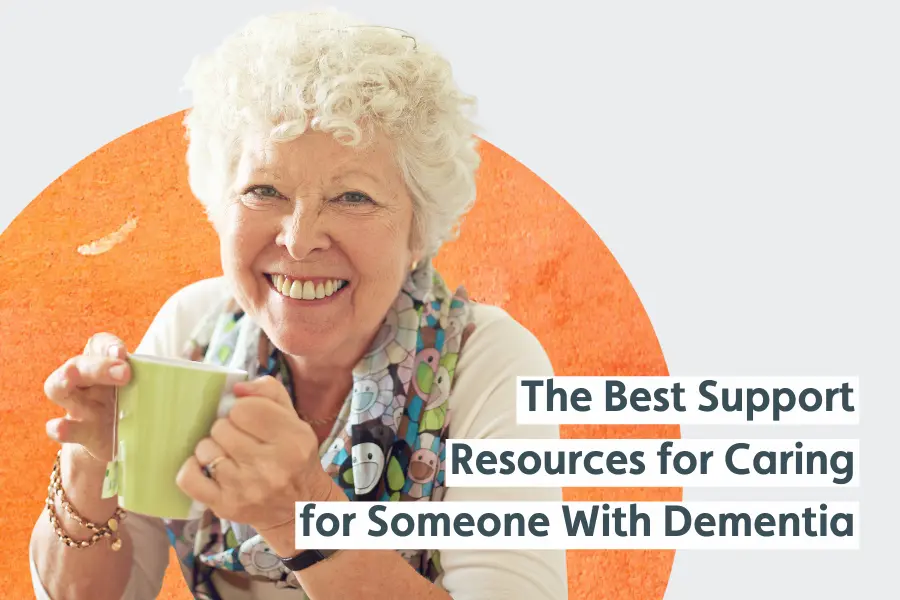Parkinson’s disease is a condition that affects the brain and can make everyday tasks, like walking or even holding a cup, much harder. It’s caused by a loss of nerve cells that produce dopamine, the chemical that helps control movement. As a result, someone with Parkinson’s may experience tremors, stiffness, or find themselves moving more slowly than usual. They may also face challenges like memory problems and depression.
For both the person living with Parkinson’s and their family, the day-to-day impact can be tough. Things that once felt easy might now take more time and patience, and as a Caregiver, you’ll probably notice changes in how your loved one goes about their daily routine. But it’s not all overwhelming—there are plenty of ways you can help manage these changes at home and make life easier for everyone.
Although Parkinson’s is a progressive condition, meaning it gets more challenging over time, there are lots of practical things you can do to support your loved one. Whether it’s small tweaks to the home or simple daily routines, you can help them maintain their independence for as long as possible.
In this blog, we’ll cover some simple, effective tips for caring for someone with Parkinson’s at home, with advice to help you handle both the physical and emotional challenges you might face along the way.
Creating a Safe Home Environment

Making sure your home is safe is one of the most important steps when caring for someone with Parkinson’s. It doesn’t have to be huge modifications—even small changes can make a big difference. Start by removing tripping hazards like loose rugs or wires, which can easily cause a fall. Keeping pathways clear is an easy way to help your loved one move around with confidence.
Adding grab bars in the bathroom or by stairs can provide extra support where it’s needed most. Something as simple as better lighting, especially in hallways or near stairs, can make navigating at night much safer.
If you’re unsure where to start, an assessment with an occupational therapist can be really helpful. They can suggest practical changes like rearranging furniture or adding mobility aids to make the home more accessible.
These small adjustments create a safer environment, giving you both peace of mind.
Managing Medication and Symptoms
Staying on top of medication is a crucial part of caring for someone with Parkinson’s. The medication needs to be taken consistently at the right times to keep symptoms under control, so establishing a solid routine is key. Setting reminders on your phone or using a pill organiser can help prevent missed doses and ensure that everything runs smoothly. By sticking to a regular schedule, you can help your loved one feel more in control and reduce the risk of sudden symptom flare-ups.
Along with managing medication, it’s also important to keep track of how symptoms change over time. Noticing new symptoms or changes in existing ones and writing them down can make a real difference when speaking to healthcare providers. By having these notes ready, doctors can adjust the treatment plan if needed, ensuring your loved one is getting the best possible care. While it might feel like a small task, keeping an eye on symptoms and sharing those updates can have a big impact on managing Parkinson’s at home.
Building a routine around medication and monitoring symptoms as they change will make a big difference in staying on top of the condition and helping your loved one manage Parkinson’s more effectively.
The Importance of Movement
Keeping your loved one moving, even in small ways, is an essential part of managing Parkinson’s. Gentle, regular movement can help reduce stiffness, improve balance, and maintain mobility over time. It doesn’t have to be anything strenuous—simple stretches, shortwalks, or light exercises can make a big difference in how they feel day to day.

Incorporating low-impact exercises into the daily routine helps keep
muscles active without putting too much strain on the body. Exercises like seated stretches, gentle yoga, or even walking around the garden can help reduce stiffness and improve circulation. The goal is to encourage movement without over-exerting—just enough to keep them feeling mobile and more comfortable.
Movement also has the added benefit of improving mood and energy levels. Regular physical activity, even if it’s just a few minutes a day, can boost both physical and mental well-being, helping your loved one feel more engaged and less isolated.
It’s always a good idea to check with a healthcare provider or physiotherapist for personalised recommendations on safe exercises that suit your loved one’s abilities. By keeping movement a part of the daily routine, you’ll be helping to manage Parkinson’s in a way that supports overall health and mobility.
Assisting with Daily Activities
When helping your loved one with daily activities, small adjustments can be key in keeping things manageable. Dressing, for example, can become difficult as motor skills decline, but adaptive tools like button hooks and clothes with Velcro fastenings can make the process easier and less tiring. By simplifying these tasks, your loved one can maintain a sense of independence.
Eating and nutrition are also important areas to consider, especially if swallowing becomes difficult. Preparing meals that are soft and easy to chew—such as soups, smoothies, or mashed vegetables—can help ensure they’re getting the nutrition they need without the stress of struggling through meals. Offering smaller portions throughout the day, instead of large meals, can also make eating more comfortable.
Finally, managing energy is essential. Fatigue is common in Parkinson’s, so encouraging your loved one to pace themselves throughout the day can prevent exhaustion. Breaking tasks into smaller steps and incorporating rest periods can help them conserve energy and feel more capable.
Supporting Emotional Wellbeing
Caring for someone with Parkinson’s involves more than just managing physical symptoms—emotional wellbeing is just as important. As the disease progresses, it’s common for your loved one to feel frustrated, anxious, or sad. It’s essential to acknowledge these feelings and encourage open conversations. Simply listening and reassuring them that it’s okay to feel this way can help them feel less  isolated.
isolated.
Maintaining social connections can also boost emotional health. Even though mobility might be more difficult, staying in touch with friends and family—whether through visits, phone calls, or video chats—can keep your loved one feeling connected and supported. These small social interactions remind them they’re not alone in this journey.
Introducing enjoyable activities is another way to support their emotional wellbeing. Engaging in things like listening to music, doing puzzles, or playing memory games can keep their mind active and provide a sense of enjoyment. These moments of fun, no matter how simple, can brighten their mood and give them something to look forward to.
Focusing on emotional wellbeing is just as crucial as managing the physical aspects of Parkinson’s, and small efforts like these can go such a long way in keeping your loved one feeling supported and cared for.
Caregiver Support and Self-Care
Caring for someone with Parkinson’s can be rewarding, but it can also take a toll on your emotional and physical wellbeing. It’s important to prioritise your own self-care—after all, you can’t pour from an empty cup.
Preventing burnout starts with setting aside personal time. It’s easy to get caught up in daily tasks, but carving out moments for yourself is crucial. Whether it’s a short walk, reading, or simply enjoying some quiet time, these breaks allow you to recharge. Don’t hesitate to ask family or friends to step in, even for a short while, so you can take a breather.
At times, you may need additional support. Respite care or professional help gives you time to focus on yourself, whether it’s for a few hours or longer. Don’t feel guilty, as caring for yourself ensures you can continue to care for your loved one effectively.
Connecting with a support network can also make a huge difference. Talking with other Caregivers through support groups allows you to share experiences and gain emotional and practical advice from those who truly understand.
Remember, you’re not alone. Taking time for yourself, seeking help, and connecting with others will better equip you to care for your loved one while maintaining your own wellbeing.
When to Consider Professional Help
There may come a time when being the sole Caregiver becomes too much to manage on your own. Recognising the signs that it’s time for professional help is important. If your loved one’s needs become more complex, or if you find yourself feeling overwhelmed, it

may be time to consider additional support. Struggling to support your loved one with daily tasks like bathing, dressing, or managing medication can signal that extra help is needed.
Live-in care is a great option for those needing more consistent support. A live-in Caregiver provides 24/7 assistance, helping with personal care, household tasks, and offering companionship. This type of care allows your loved one to remain in their familiar home environment while receiving the help they need, taking much of the pressure off family Caregivers.
Professional Caregivers can fit into your routine, offering tailored care to meet your loved one’s specific needs. From medication management to mobility support, they bring expertise that ensures your loved one is safe and comfortable, while also giving you peace of mind.
Deciding to bring in professional help can feel challenging, but it’s a positive step that can greatly improve the quality of life for both you and your loved one.
Care with Compassion
Caring for a loved one with Parkinson’s is no small task. It comes with its unique set of challenges, both physically and emotionally. However, with the right strategies, support systems, and a compassionate approach, it is possible to provide effective care at home while maintaining your own wellbeing.
Remember, you don’t have to do this alone. Reach out for help when you need it, whether it’s from family, friends, or professional Caregivers. There are also support groups and resources available to guide you through the journey of caring for someone with Parkinson’s.
If you’re feeling overwhelmed or unsure where to start, reach out to us for support in navigating home care. We can help you explore your options and find the best way forward for you and your loved one.
Resources for Parkinson’s Support
If you or a loved one are living with Parkinson’s, there are numerous organisations across the UK offering support, information, and practical resources. Below are some key places to turn for help:
- Parkinson’s UK: Provides comprehensive support services, including a helpline, local support groups, and access to expert information on managing Parkinson’s.
- The Cure Parkinson’s Trust: Focuses on funding research to find a cure for Parkinson’s and provides information about clinical trials and research developments.
- Parkinson’s Care and Support UK: Offers support services such as respite care, exercise classes, and advice on holistic approaches to managing Parkinson’s.
- Carers UK: Supports family Caregivers by offering practical advice, information about carer rights, and opportunities to connect with other carers.
- NHS Parkinson’s Services: Provides an overview of Parkinson’s disease, symptoms, and NHS services available for diagnosis, treatment, and ongoing care.
Chloe joined us in early 2024 as our content manager. Having earned a first-class degree in digital marketing and spending more than six years in public relations, she’s well-placed to shape informative content and heartfelt stories that help inform our clients and connect them with the care they need.
Having worked across a multitude of different industries before care, Chloe’s passion lies in the meaningfulness of her work – from creating content that guides clients through their care journey to helping Caregivers find a rewarding new role.
At Unique, Chloe finds fulfilment in our supportive culture and the heart-warming stories from both clients and carers that highlight the impact of our services.






